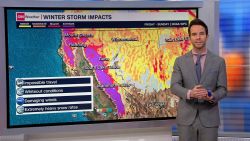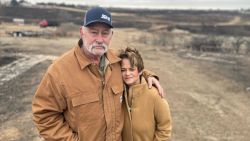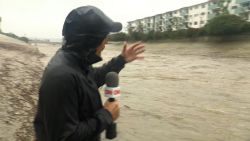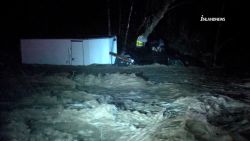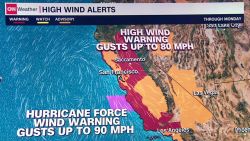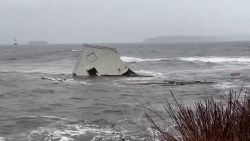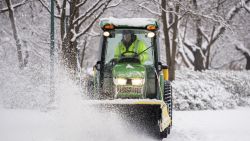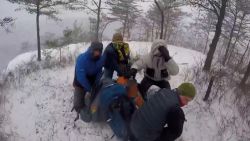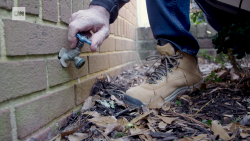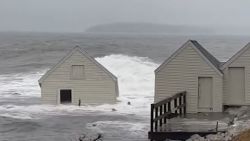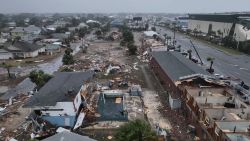All-time records are in jeopardy this week as a dangerous heat wave bakes much of the Western United States, an area already begging for moisture due to exceptional drought.
“Record-high tempertures will just continue the vicious cycle that so often happens in droughts, where hot, cloudless skies result in increased evaporation of what little water is left in lakes and rivers,” says CNN meteorologist Brandon Miller. “This, in turn, worsens the drought.”
The latest drought monitor released June 10 categorizes a majority of the southwestern US as experiencing extreme to exceptional drought conditions. Major heat on the way this week will only worsen the deteriorating outlook.
“This has a clear fingerprint of climate change, where increasing temperatures will drive this vicious cycle, especially in places like the Western US, where rainfall has been noticeably lessening,” Miller says.
All-time maximum temp records will be tied or broken
At least 12 states are included in a heat-related advisory, watch or warning as triple-digit temperatures threaten to surpass previous records from California to the Northern Rockies.
Excessive heat warnings are in effect for as far north as Montana. The National Weather Service (NWS) in Billings is forecasting highs Monday and Tuesday to surpass 100 degrees and shatter all-time records set as early as 1918 in Sheridan.
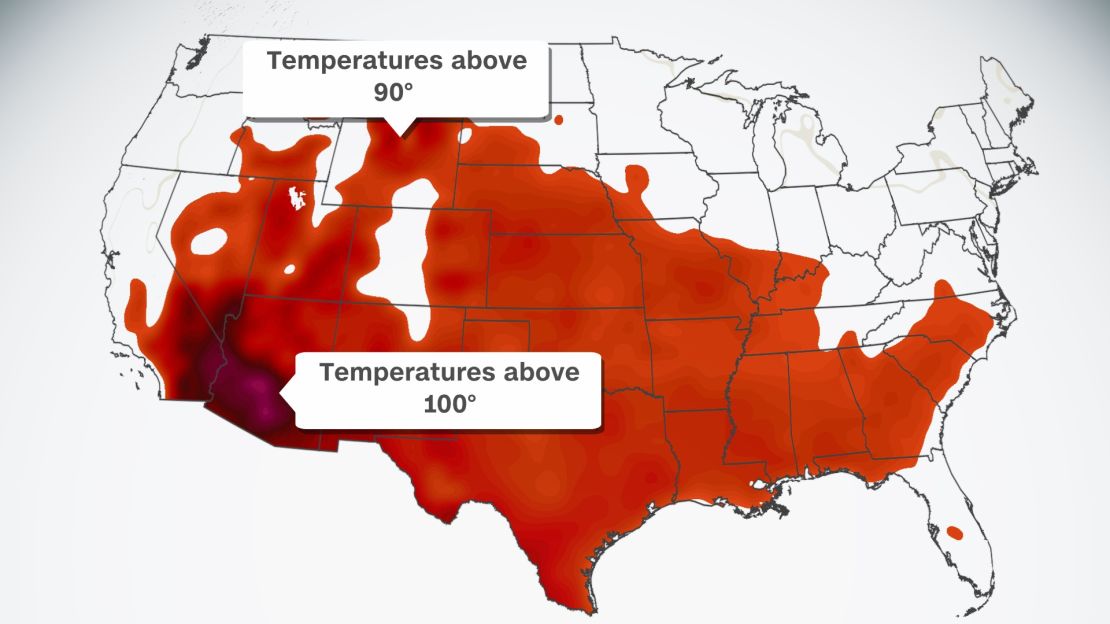
Tuesday has the potential to reach the highest temperature ever recorded in Billings –108 degrees, measured on July 14, 2002.
See just how hot these temperatures are forecast to reach
“We do have some winds coming in and if it’s enough, we could get some warmer temperatures to mix down and that could boost us up over the edge,” NWS Billings meteorologist Aaron Gilstad said of the potential record breaker.
Searing conditions will also impact the Desert Southwest, bringing extreme heat to areas already known for their scorching summer days.
“Excessive heat warnings/watches are in place for many areas of the Southwest and into the California Central Valley next week, with temperatures climbing well into the 110s in the lower deserts with low temperatures only in the 80s and 90s,” said the Weather Prediction Center in its extended forecast discussion.
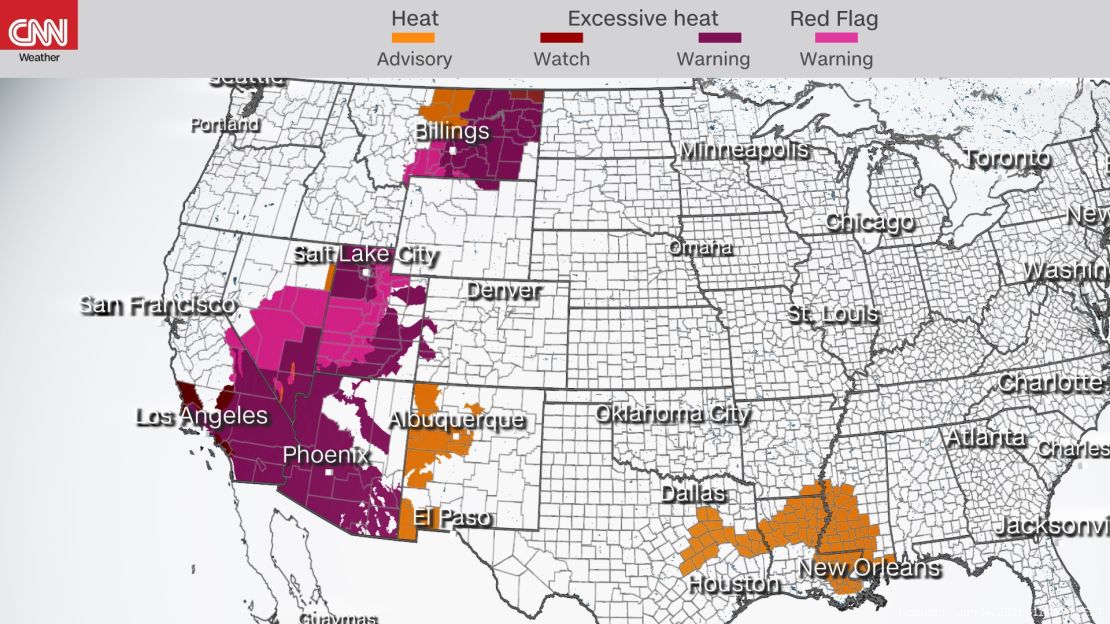
The Desert Southwest is notorious for its blistering temperatures, but Nevada and Arizona could see all-time high-temperature records broken by the end of this week.
“There are a lot of records that have the potential to be broken. Las Vegas will start with its all-time high record of 117,” said NWS Las Vegas meteorologist Ashley Nickerson. “We do have the potential to be reaching that, especially Wednesday, Thursday and Friday.”
Las Vegas has tied its all-time high of 117 on four occasions: July 24, 1942, July 19, 2005, June 30th, 2013, and June 20, 2017. The hottest temperature ever set in Nevada was 125 degrees Fahrenheit, recorded in Laughlin on June 29, 1994.
In Las Vegas, elevated temperatures 10-15 degrees above average could soar past a string of daily record high temperatures set from June 12-June 19 in 1940. An excessive heat warning will be in effect through Saturday and NWS Las Vegas is warning residents that this is not typical desert heat.
Phoenix will see the greatest jump up from average highs so far this month at more than 10 degrees above normal. Afternoon temperatures in south-central Arizona could reach 111 to 119 degrees.
According to the National Weather Service, the hottest temperature ever recorded at an official NWS weather observing site was 128 degrees Fahrenheit on June 29, 1994, at Lake Havasu City.
Little relief in sight for the drought
Parched soil and brush in the West due to extremely dry conditions and hot temperatures has led to exceptional drought in a dozen states. There is no relief on the horizon as the heat wave ramps up throughout the week.
“Most of our area is in an exceptional drought. Obviously, the hot temperatures and continued dry conditions are not going to help that situation. For example, (Lake) Mead has reached some of its lowest levels that it has reached historically, without any rain or snowmelt, that will continue until hopefully, we get a lot more rain,” said Nickerson.
Lake Mead is a reservoir formed by the Hoover Dam just outside of Las Vegas. It sits along the Colorado River and provides water for many cities downstream. Around 25 million people in several states rely on the lake for drinking water, irrigation and power.
It takes substantial rain to break droughts, especially in conditions as dire as the Southwest. Each year, the region depends on monsoon rains to relieve the thirsty earth.
Monsoon awareness week began June 13, but the monsoon has yet to make its appearance. The Climate Prediction Center monthly outlook for June shows persisting drought conditions and little in the way of moisture.
Wildfires rage as the danger for more fires continues
Along with the worsening drought, fire danger concerns will continue to grow into this week.
The situation is critical in eastern Nevada and western Utah through Wednesday as winds ramp up and relative humidity values remain in the single digits. Elevated fire conditions expand through Nevada and Utah into midweek, where temperatures will also be close to breaking records.
NWS Salt Lake City is forecasting Tuesday’s temperatures to tie the all-time June record at 105 degrees, nearing the highest temperature ever recorded of 107, measured on July 26, 1960, and July 13, 2002.
A red-flag warning is in place through Tuesday evening for central Nevada and eastern Utah due to breezy winds, extremely low relative humidity values, and dry fuel.
Fires that ignite in the sweltering conditions have enough fuel to expand quickly due to the dry brush. The lack of moisture has allowed for little new growth, and the existing vegetation has been dried out considerably by the ongoing drought.
Arizona, Utah, and New Mexico are already seeing large fires with smoke reaching as far north as Colorado and Wyoming. The Telegraph Fire in Arizona, burning over 88,000 acres, is now 74% contained. To its east, the Mescal fire is 88% contained after burning over 72,000 acres.



